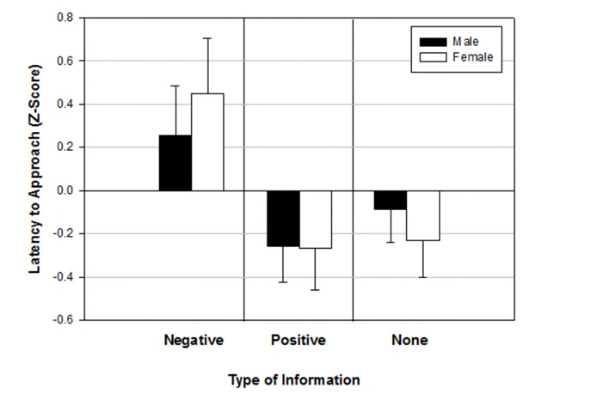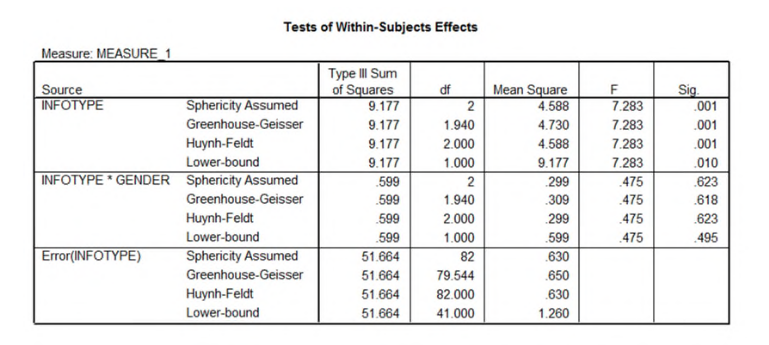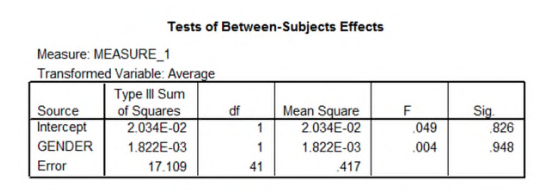Field and Lawson (2003) reported the effects of giving children aged 7-9 positive, negative or no information about novel animals (Australian marsupials) . This variable was called 'Infotype'. The gender of the child was also examined. The outcome was the time taken for the children to put their hand in a box in which they believed either the positive, negative, or no information animal was housed (positive values = longer than average approach times, negative values = shorter than average approach times) . Based on the output below, what could you conclude? (See Field, A. P., & Lawson, J. (2003) . Fear information and the development of fears during childhood: effects on implicit fear responses and behavioural avoidance. Behaviour Research and Therapy, 41, 1277-1293.) 


Definitions:
Balance Sheet
A financial statement that summarizes a company's assets, liabilities, and shareholders' equity at a specific point in time, providing a basis for computing rates of return and evaluating its capital structure.
Price-To-Book Ratio
A financial measure that compares a company's current market price to its book value, indicating the value the market places on the net assets of a company.
Market Capitalization Rate
Market capitalization rate refers to the expected rate of return on a portfolio or an investment given its risk level, often used in the valuation of stocks.
Return-On-Equity Ratio
A financial ratio that measures a company's ability to generate profits from its shareholders' equity.
Q7: What does the Estimates of Covariance Parameters
Q11: A midwife conducted a Bayesian analysis of
Q11: For the same data, a chi-square test
Q12: In IBM SPSS, what does clicking on
Q14: A researcher wanted to know if people
Q15: You are the CEO of a small
Q23: If the scores on a test have
Q24: A _ is a numerical characteristic of
Q28: View the anxiety data (Sport Competitive Anxiety
Q29: What does the graph below indicate about